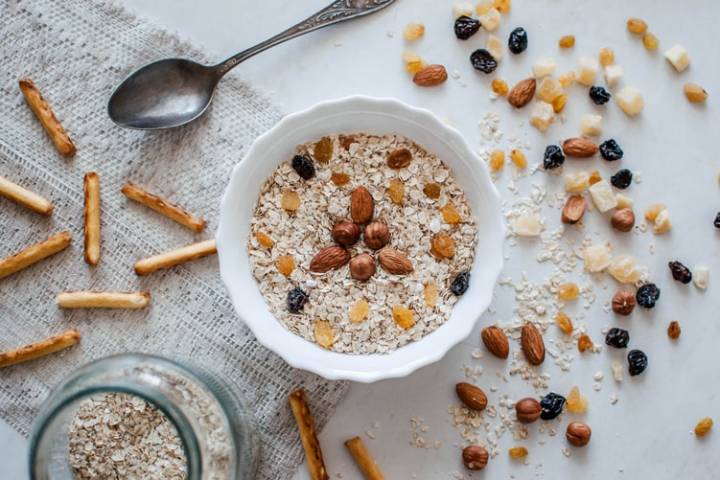Fitness
The Best Healthy Snacks for Athletes
Why are healthy snacks important?
Athletes and active people need more calories and nutrients than people who do not exercise regularly. Nutrients include carbohydrates, protein, fat, vitamins, and minerals. Healthy snacks can provide these extra calories and nutrients you need. Eating a healthy snack before exercise will give you energy. Eating a healthy snack right after exercise can keep you from overeating during mealtime.
What snacks should I avoid?
Avoid snacks that are high in fat and sugar. Some examples are doughnuts, cookies, potato chips, candy bars, and sodas. These foods are low in healthy nutrients. They may not give you the energy you need to perform well during exercise and sports competitions.
What kind of snacks should I eat?
Eat snacks that are fast, easy, and healthy. You will have to plan these snacks ahead of time and have them available when you need them. This will make it easier for you to fit in healthy snacks during a busy schedule. Choose snacks from all the food groups to get a variety of nutrients throughout the day.
- Apple or banana slices and peanut butter
- Whole-grain crackers and cheese
- Carrot and celery sticks with dressing
- Cottage cheese or yogurt with fresh or canned fruit
- Energy bars, breakfast bars, or granola bars.
- Crackers and hummus (garbanzo bean dip)
- Trail mix with nuts and dried fruit
- Whole-grain bread or bagel sandwich (with peanut butter, turkey, lean roast beef, or tuna)
What are some other tips for eating healthy snacks?
- Some snacks will need to be kept in a refrigerator or in a cooler with ice so they will not spoil. Make sure these foods are not at room temperature for more than 2 hours. After 2 hours, bacteria can grow in these foods, which can make you sick. Food that should be kept cold includes milk and dairy products, such as cottage cheese and yogurt. It also includes salads or sandwiches made with meat, fish, or poultry.
- If you are trying to control your weight, eat a snack before you get too hungry. This will keep you from eating too much later in the day. Ask your dietitian how many calories you should have each day. Your dietitian can help you choose snacks that will help you get the right amount of calories.
What snacks should I eat right before a sports competition?
- The snack you should choose before a competition depends on how long you will be exercising. For competitions that last longer than 1 hour, choose carbohydrates that your body digests slowly. Some examples are yogurt, bananas, oatmeal with milk, apples, and energy bars. If you will be exercising for less than 1 hour, choose carbohydrates that your body digests quickly. Some of these foods include crackers, bread, and english muffins.
- Eat snacks 1 hour before a competition to prevent hunger and low blood sugar. A drop in blood sugar can make you feel lightheaded and tired. Eat 1 gram of carbohydrate for each kilogram of your body weight. To figure out your weight in kilograms, divide your weight in pounds by 2.2. If you weigh 70 kilograms, you should eat 70 grams of carbohydrates.
- Avoid foods high in fat, sugar, or fiber before you exercise. High-fat foods take longer to digest and may cause stomach discomfort. High-sugar foods may cause your blood sugar to drop quickly during exercise. High-fiber foods, such as whole grain breads and cereals, may cause gas and stomach discomfort.
- Eat snack foods that you are used to eating. It is best not to try a new food before a sports competition. Each person digests food differently. Certain foods may cause stomach cramping, gas, or diarrhea. This may cause you to slow down or even stop the competition. Try new snack foods on a different day.
Further information
Always consult your healthcare provider to ensure the information displayed on this page applies to your personal circumstances.
Mini-Menu Ideas
Dry cereal: Try some finger-food cereals (unfrosted) alone or mixed with nuts, raisins or dried fruits. Take your cereal blend with you and eat it dry if you don’t have time to add milk.
Trail Mix: Choose one that contains nuts, fruit and some cereal or pretzels.
Yogurt: Buy it with the fruit added, or buy it plain and add your own favorite fruits or granola. Try the regular or thick-and-creamy fruited versions or the yogurt drinks.
Instant oatmeal: Make it with low-fat milk instead of water. Add chopped nuts and raisins.
Crackers: Try the whole-grain or stone-ground wheat variety and reduced-fat versions.
Nut butter (almond, cashew and peanut): Spread it on a banana, bagel or rice cake. Make your own snack using peanut butter and whole-grain crackers.
Pretzels: Try various sizes and shapes to find the ones you like best. Buy the salt-free variety, or knock off the salt entirely if reducing your salt intake is important. Avoid pretzels with fat added.
Fruit: Fresh fruit is always a good choice. Make your own snack packs using dried fruits like raisins, cherries and cranberries.
Frozen fruit bars: Choose the ones with fruit or fruit chunks at the beginning of the ingredients list.
Nuts and seeds: Find ways to add peanuts, almonds, pecans, walnuts, sunflower seeds, pumpkin seeds, etc. to foods or eat them alone. They’re a healthy choice, but be aware that they’re also high in calories.
Baked potatoes: Microwave them in minutes, and eat them hot or cold. Add cheese for protein and calcium. Don’t forget sweet potatoes as an option.
Pizza: Order thick-crust with vegetables and/or Canadian bacon instead of pepperoni, sausage or the meat-lover’s version.
Energy bars, breakfast bars and low-fat granola bars: Bars are convenient, but they can be expensive. And don’t believe all the labels say about enhancing your performance. It’s the calories you’re consuming that give you energy, not some magical ingredient. Be sure to read the label carefully.
Sandwiches: Use whole-wheat or whole-grain bread. Be sure to use lower-fat meat-and-cheese choices and reduced-fat versions of mayo. Add lettuce, tomatoes and green pepper slices to provide another food group.
Cheese sticks and cheese cubes: Reduced-fat choices are available with 5 grams or less of fat per ounce. Eat them alone or with crackers and fruit.
Cottage cheese: Use the snack-size, low-fat versions. Eat cottage cheese along with snack-size canned fruit or green pepper and tomato.
Tortilla: Try the whole-wheat version. Add shredded cheese and vegetables, roll it up and microwave.
Bagels: Toast and top them with reduced-fat cheese, cream cheese or peanut butter. Try the whole-grain versions.
Popcorn: The snack-size microwave light versions are just the right size to take on the run. Instead of using butter, try spraying popcorn with cooking oil sprays and adding spices like chili powder or garlic powder.
Raw vegetables: Baby carrot sticks in individual packages and cut-up, washed broccoli and cauliflower are readily available at the supermarket. Take them along with a snack-size container of a light salad dressing dip.
Tuna: A can of the water-packed snack size goes well with crackers and fruit.


